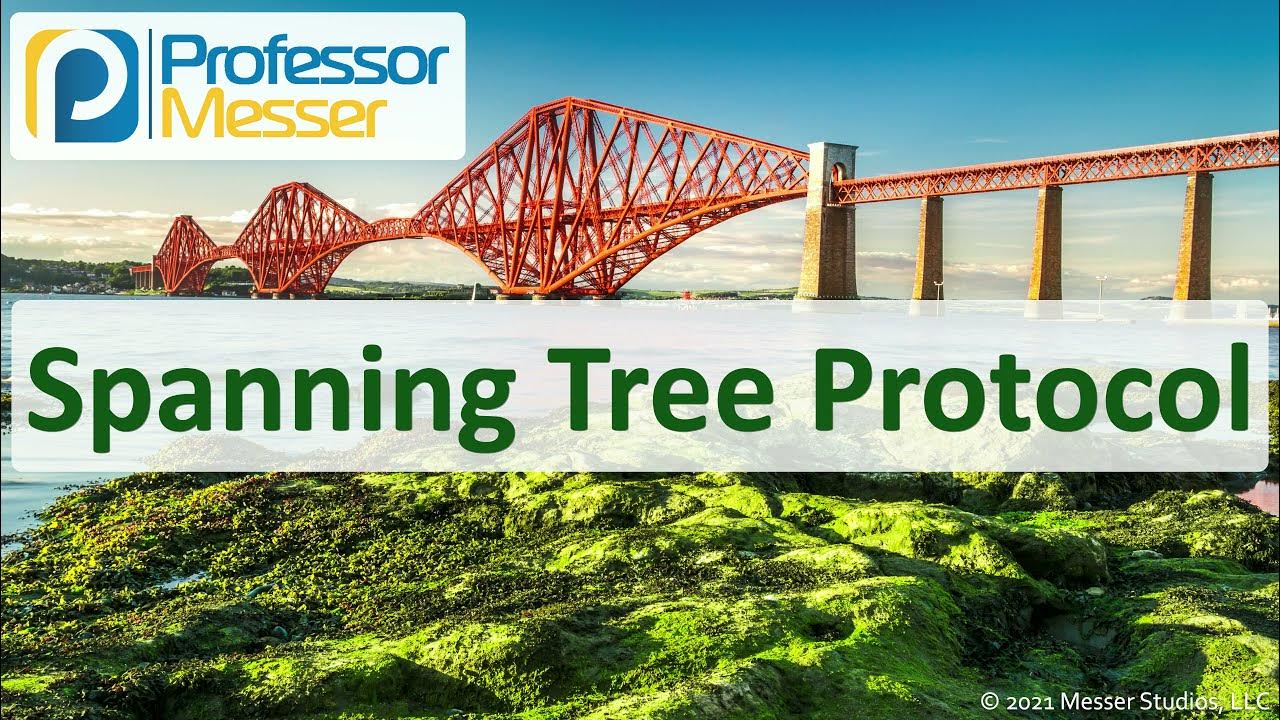Spanning Tree Protocol | CCNA - Explained
Summary
TLDRThis video explains the Spanning Tree Protocol (STP) and Rapid Spanning Tree Protocol (RSTP), key mechanisms in preventing broadcast storms and network loops in Ethernet networks. STP works by determining the root bridge and blocking certain ports on switches to avoid endless broadcast loops. The video also compares STP with its faster counterpart, RSTP, which reacts to network changes in under 6 seconds. The content includes an experiment to simulate a broadcast storm and highlights the benefits of using Brilliant’s interactive learning platform for further study in programming, AI, and data analysis.
Takeaways
- 😀 Devices in a network use MAC addresses to communicate and broadcast frames to discover the MAC addresses of other devices.
- 😀 Switches forward broadcast frames to all devices connected to them in a local network.
- 😀 Adding redundant switches to a network increases reliability but can create broadcast loops, leading to broadcast storms.
- 😀 A broadcast storm occurs when broadcast frames keep circulating endlessly, causing network congestion and preventing communication.
- 😀 Spanning Tree Protocol (STP) prevents broadcast loops by blocking certain ports on switches to ensure there is only one active path between devices.
- 😀 STP elects a root bridge, the most important switch in the network, based on the lowest Bridge ID, which consists of the priority number and MAC address.
- 😀 The root port is the port on a non-root switch that has the lowest path cost to the root bridge.
- 😀 The path cost is determined by the link speed, where 1 Gbps equals a cost of 4, 100 Mbps equals 19, and 10 Mbps equals 100.
- 😀 Non-root switches block certain ports to prevent broadcast loops. The switch with the higher Bridge ID will have its port blocked.
- 😀 Rapid Spanning Tree Protocol (RSTP) improves STP by adapting faster to network changes (under 6 seconds compared to 30-50 seconds in STP).
- 😀 You can simulate a broadcast storm by creating a loop in a network with a non-loop-blocking switch, showing how network communication fails under a broadcast storm.
- 😀 Brilliant offers an interactive learning platform for subjects like math, data analysis, programming, and AI, making learning engaging and practical.
Q & A
What is the purpose of the Spanning Tree Protocol (STP)?
-The purpose of Spanning Tree Protocol (STP) is to prevent broadcast loops in a network, particularly when multiple switches are used, by determining which ports should be blocked to avoid such loops.
How do network devices communicate with each other in a local area network (LAN)?
-Network devices communicate by broadcasting a signal to find the MAC address of the device they want to communicate with. Once the MAC address is discovered, communication can take place.
What problem can arise from using multiple switches in a network?
-Using multiple switches can create broadcast loops, which can lead to a broadcast storm where data endlessly circulates, causing the network to come to a halt and preventing communication between devices.
What is a broadcast storm, and how does it affect a network?
-A broadcast storm occurs when broadcast frames endlessly circulate in the network, causing a continuous loop. This consumes all network resources and makes the network unusable, as no data can be transmitted or received.
How does Spanning Tree Protocol (STP) prevent broadcast loops?
-STP prevents broadcast loops by blocking certain ports on switches. This helps eliminate redundant paths that could lead to loops while maintaining a functional network topology.
What is the root bridge in the context of Spanning Tree Protocol (STP)?
-The root bridge is the most important switch in a network, elected based on the lowest Bridge ID, which is a combination of the switch’s priority number and MAC address.
How is the root bridge selected in STP?
-The root bridge is selected by having all switches exchange Bridge Protocol Data Units (BPDUs), and the switch with the lowest Bridge ID, which is determined by the combination of priority value and MAC address, is chosen as the root bridge.
What are root ports in Spanning Tree Protocol (STP)?
-Root ports are the ports on non-root switches that provide the fastest path to the root bridge. They are selected based on the lowest path cost, where lower-cost paths are preferred.
How is the path cost calculated for root ports in STP?
-The path cost is calculated based on the link speed: for a 1 Gbps link, the cost is 4; for 100 Mbps, the cost is 19; and for 10 Mbps, the cost is 100. The lowest path cost is used to determine the root port.
What happens when a port is blocked in Spanning Tree Protocol (STP)?
-When a port is blocked in STP, it is shut down to prevent any broadcast loops. If another link fails, STP will reactivate the blocked port to restore network functionality and prevent disruption.
Outlines

This section is available to paid users only. Please upgrade to access this part.
Upgrade NowMindmap

This section is available to paid users only. Please upgrade to access this part.
Upgrade NowKeywords

This section is available to paid users only. Please upgrade to access this part.
Upgrade NowHighlights

This section is available to paid users only. Please upgrade to access this part.
Upgrade NowTranscripts

This section is available to paid users only. Please upgrade to access this part.
Upgrade Now5.0 / 5 (0 votes)





